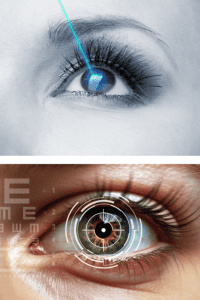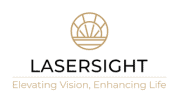Why do I need to wear glasses or contact lenses?
The need for glasses or contact lenses is quite common and becomes more common with age.
There are several conditions that cause people to require glasses such as having trouble seeing objects at a distance from you, close to you, or both. The conditions that cause these problems are:
- Myopia (Short sightedness)
- Hyperopia (Long sightedness)
- Astigmatism Presbyopia
What types of Laser Vision Correction are there?
It is fantastic that we live in an age where there are many options for laser vision correction, which allows treatment for the vast majority of people who desire to be free from glasses or contact lenses.
The three main types of laser vision correction are:

Photorefractive Keratectomy (PRK)
PRK is a type of laser eye surgery used to treat nearsightedness, farsightedness, and astigmatism. It involves removing the outer layer of the cornea, then reshaping the cornea with a laser to improve vision. PRK typically requires a longer recovery time compared to other methods but is a good option for patients with thinner corneas.
LASIK (Laser-Assisted In Situ Keratomileusis)
LASIK is the most common laser surgery to correct nearsightedness, farsightedness, and astigmatism. The procedure involves creating a thin flap in the cornea, reshaping the underlying tissue with a laser, and then repositioning the flap. LASIK offers a quick recovery time and minimal discomfort.
SMILE (Small Incision Lenticule Extraction)
SMILE is a minimally invasive laser surgery for correcting nearsightedness and astigmatism. A small incision is made in the cornea, and a lenticule (small disc of tissue) is removed to reshape the cornea. SMILE offers a similar fast recovery to LASIK.
Laser Vision Correction is performed by Dr Brett Drury, a specialist corneal and refractive surgeon, through Lasersight, Gold Coast.

